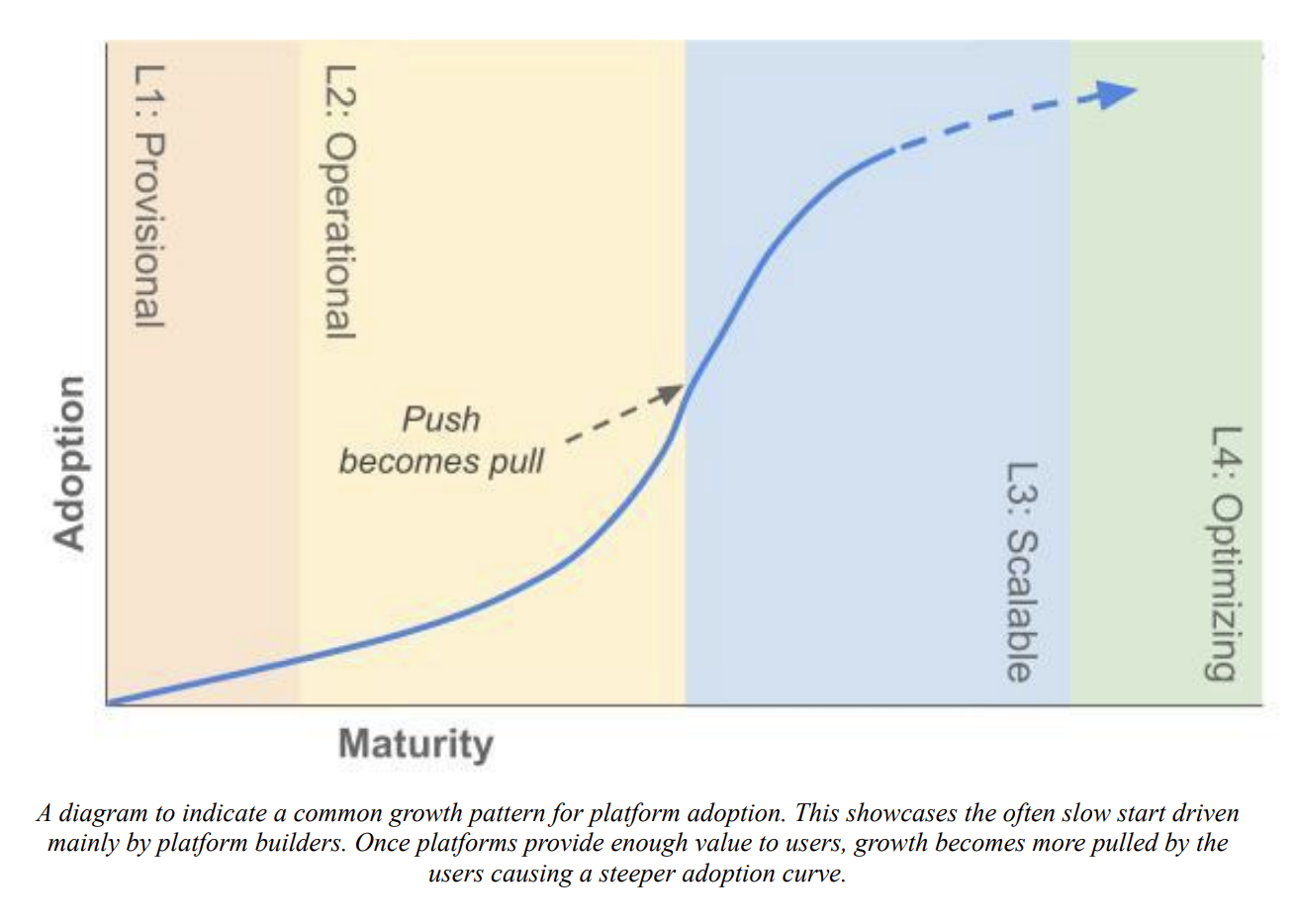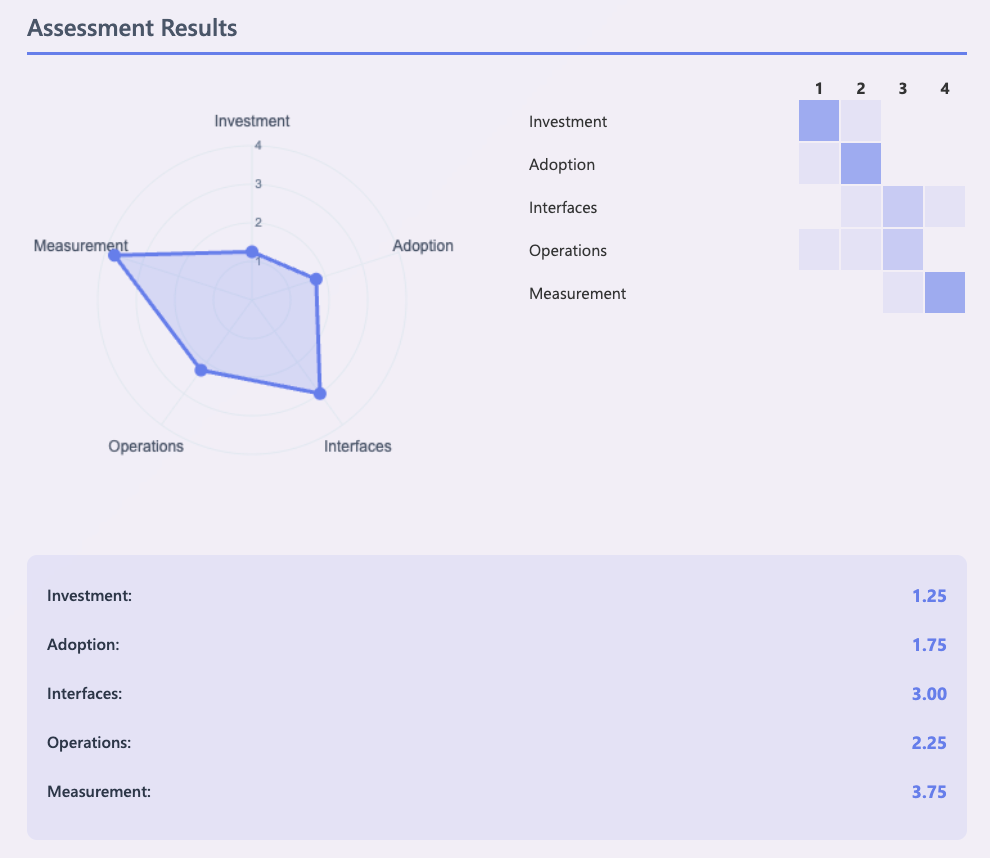- Article
Navigating Platform Engineering with the maturity model assessment
The CNCF Platform Engineering community has been working on an assessment to accompany the Platform Engineering Maturity Model. It’s now available as a preview for feedback, but it’s crucial to understand its purpose to know what it can do for you and what you need to put in once you get your score.
The assessment is a series of multiple-choice questions that takes around 20 minutes to complete. It runs in your browser and no data is shared. Once complete, you’ll get a report card that shows you where you sit within the Platform Engineering Maturity Model.
Help us out by trying out the assessment and giving us feedback.
Platform orienteering
Picture yourself at the edge of a vast forest. You know there’s a destination somewhere out there, but between you and your goal lies unfamiliar terrain filled with hills, valleys, streams, and dense woodland. This is orienteering, the sport of navigating unknown territory using only a map and compass.
You can take part in orienteering with minimal kit. If you have a map, you can work out the rest using landmarks. Perhaps you’ll spot that distinctive hill in the distance, follow the bend of a river, or use a church spire as a reference point. But it gets a whole lot easier if you have a compass to tell you which direction you’re facing.
That’s why we wanted to add an assessment tool to accompany the Platform Engineering maturity model. Just like orienteering requires both a map and a compass working together, a successful Platform Engineering transformation needs a clear picture of the landscape and a way to determine your current position.
The maturity model is the map
In orienteering, a map is your window into the landscape. It shows you the contour lines that reveal steep climbs and gentle slopes, the symbols that mark forests, clearings, and water features, and the network of paths that connect different areas. But here’s what’s crucial to understand: the map shows you the terrain as it exists, not where you are within that terrain.
The Platform Engineering maturity model works the same way. It’s a detailed map that describes the features of the Platform Engineering landscape. It has the organizational structures, the technical capabilities, the process maturity levels, and the cultural elements that define different stages of platform evolution. It shows you what “good” looks like at various levels of sophistication.

What a map doesn’t tell you is where you are right now, or where you want to go. When it comes to your destination, it’s your journey, so it’s for you to decide. We’re each heading somewhere different, and that’s as true for Platform Engineering maturity as it is for choosing whether to head to a peaceful lakeside clearing or push for the challenging summit.
Some organizations want to reach the beach: a stable, reliable platform that serves their current needs without unnecessary complexity. Others are drawn to the heady heights of mountains, pursuing cutting-edge capabilities and pushing the boundaries of what’s possible with Platform Engineering. Both destinations are valid; the map just helps you understand the terrain that lies between you and your next waypoint.
The assessment is a compass
Once you have the map and an idea of where you want to get to, the one thing standing in your way is knowing where you are right now. In orienteering, you might recognize that hill over there and that stream down below, but you can’t orient the map correctly without knowing which way is north. You could be looking at the landscape upside down for all you know.
You can’t plan a route until you know your starting point. Are you at the bottom of the valley looking up, or are you halfway up the slope? Are you even on the side of the right mountain? The difference determines everything about your next steps.
This is where the Platform Engineering assessment comes in. It functions as your compass, not the magnetic but the organizational kind. It helps you work out which way around to hold the map and where you are within the Platform Engineering landscape. The assessment asks targeted questions about your current practices, capabilities, and organizational structures, then plots your position on the maturity model map.
With both map and compass in hand, you can finally see the whole picture: here’s where you are, there’s where you want to go, and now you can begin to understand the terrain you’ll need to cross to get there.
Route planning
When we were gathering feedback on the assessment during its development, one question came up repeatedly: “This is great for showing me where I am and where I could go, but how do I actually get from here to there?”
It’s a natural question. In orienteering, once you know your position and your destination, the next step is route planning. Do you take the direct path that cuts straight across that steep hill, or do you follow the longer but easier route that curves around the valley? Should you push through the dense forest or stick to the clearer paths that might add distance but save time?
At the moment, detailed route planning isn’t part of the assessment. Think of our current tool as a reliable map and compass combination, but not a complete GPS navigation system yet. The “SatNav version” that provides turn-by-turn directions is a later evolution we’re considering.
The assessment might prompt you about your intended destination and offer some general recommendations, like suggesting that organizations aiming for advanced platform capabilities typically need to focus on developer experience metrics or that teams targeting rapid scaling should prioritize automation investments. But we deliberately don’t want to remove human expertise and judgment from the process.
When we add more detailed recommendations in future versions, those recommendations will remain general enough to require customization. There’s always space for the next steps to be tailored by people who understand your organization’s unique context, constraints, and goals. After all, no two orienteering courses are exactly alike, and neither are any two Platform Engineering transformations.
Prototype assessment feedback
We are open to feedback for all elements of the assessment. For example:
- Are the questions and answer options clear?
- Did the result match your expectation?
- Are the visualizations helpful or should we try something else?
The assessment scores responses for each category in the maturity model. This information is shown in three ways in the assessment’s output.
- Spider chart: Uses the average score in each category to highlight strengths and weaknesses.
- Matrix: Plots answer density to show the spread within each category.
- Table: Displays average scores per category.

Helping you navigate
The assessment gives you the essential foundation: a clear understanding of where you stand and the possible paths forward. From there, the art of navigation, whether through forests or platform transformations, remains a uniquely human skill.
You can help by trying the assessment and giving us feedback.
To learn more about what’s happening in the platform engineering community, join our Slack Channel and follow our LinkedIn page.
Feedback
Was this page helpful?
Glad to hear it! Please tell us how we can improve.
Sorry to hear that. Please tell us how we can improve.